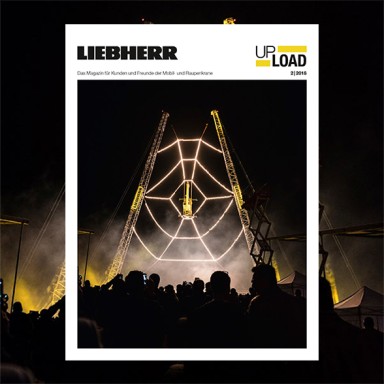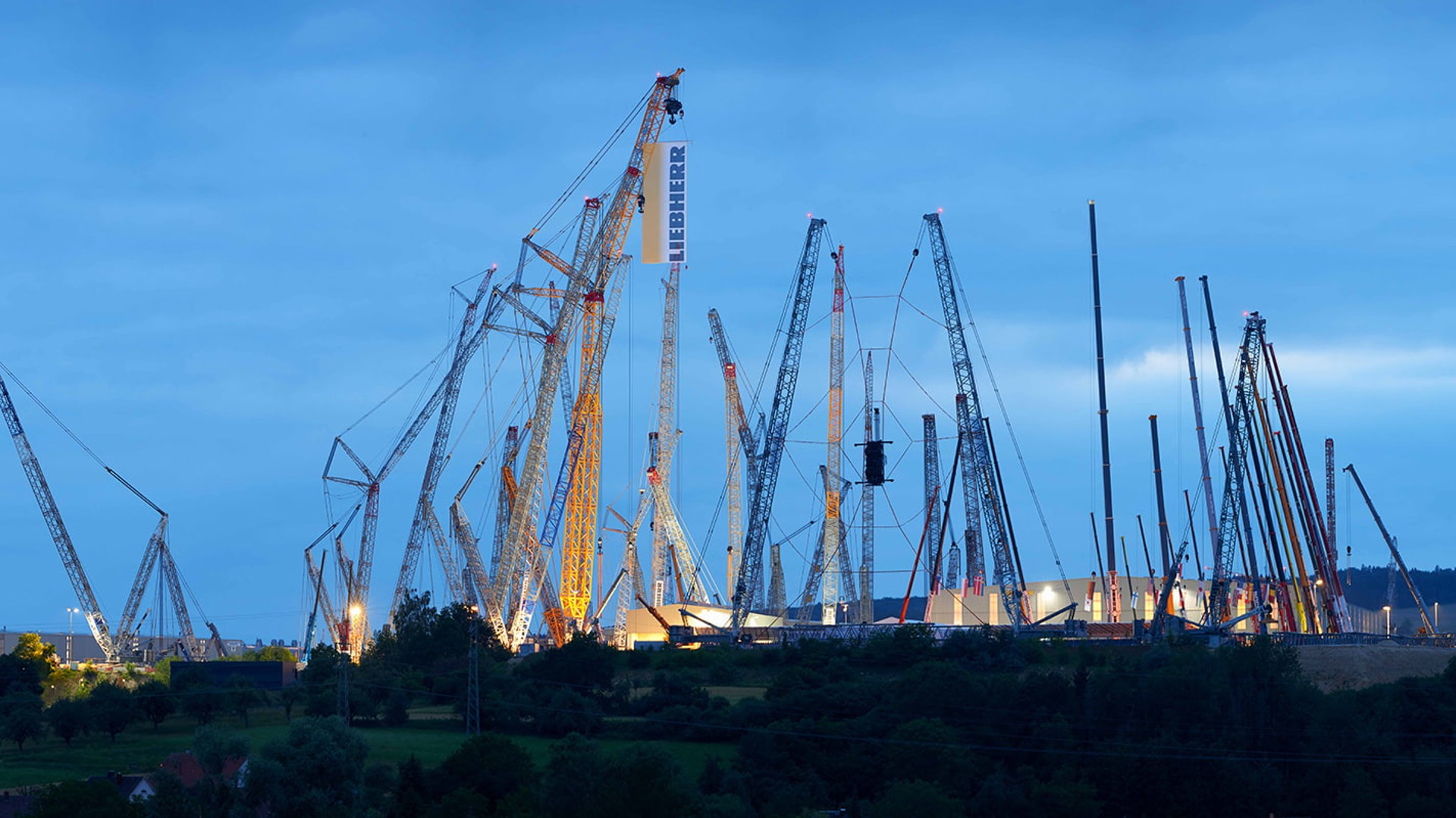
6 minutes | magazine 02/2018
Digging deeper: How did the Liebherr spider come about?
It was October 2017. A new email from his line manager popped up on the screen, looking for ideas for a technical highlight and eye-catching display for the customer days in 2018. At the same time, structural engineer Thomas Stangl reviewed the highlights of previous customer days in his mind’s eye: The crane mobile made of crawler cranes and the M sculpture with two rotating LTM 1750-9.1 cranes standing on their heads.
The idea of a spider’s web then came to me quite suddenly
There is a tradition in Ehingen of presenting its mobile and crawler cranes, which are so popular throughout the world, in something of a different light.
Thomas Stangl spent his lunch break in a quiet office. His pencil was poised over blank sheet of paper. He thought hard. Cranes have already been presented in unusual positions fairly frequently. He wanted to combine crawler and telescopic cranes. But not all the ideas he had would work. This is because not everything is possible from a statics point of view and, of course, safety is a priority. But somehow he wanted to combine crawler cranes and telescopic cranes. The crawler cranes could form a type of roof with a telescopic crane below it. “The idea of a spider’s web then came to me quite suddenly”, recalls Thomas Stangl. The central component of the installation, the spider, was to be the new LRT crane, which at the time had just been launched.
The engineer drew an initial sketch straight away, and it immediately proved popular with his colleagues. “They fitted the bill as extraordinary eye catchers which at the same time could be achieved without enormous expense”, says Stangl. This idea led to the creation of a suitable slogan for the customer days – "Strongly connected".
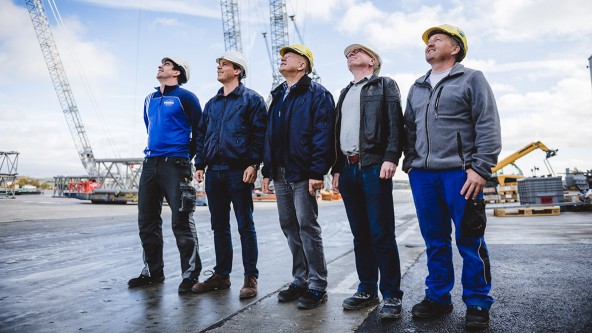
Great expectations – the spider crawls into its web
From paper into practice
The design departments brought the spider to life. Designer Manfred Rechtsteiner produced a detailed technical drawing on the basis of Thomas Stangl’s sketch. This process particularly looked at the details which he worked out together with his colleagues. Gerold Mohr studied the lifting capacity of the construction using various load assumptions and wind speeds in very great detail. The design of the equipment on which the LRT crane could be suspended centrally was left to Alexander Springer.
Then the spider continued to spin its web and reached Liebherr’s crane acceptance section. The three men mainly responsible for its practical production, Wolfgang Grab, Josef Ried and Benjamin Lock, remember their first impression: “The drawing looked interesting, we’d never seen anything like it before. It also appeared to be feasible from a practical point of view although at the back of our minds we continued to ask what other challenges would appear. There is always a difference between theory and practice. But from the very beginning we had a good feeling about it.”
The objective was not only to implement the idea in technical form, but also to create an attractive look. Using standard steel ropes as the spiders web was not possible as a result of their poor visibility. With Thomas Stangl and Manfred Rechtsteiner on board, the creative minds decided to use highly visible, round textile slings in orange. Hemp ropes were drawn through the empty sleeves in the round slings for the nonload-bearing connections.
What is easy for any spider proved a real challenge for Liebherr – how did they stop the ropes sagging? “The weight of the rope and the working height could not be underestimated. We conducted several tests in advance and decided to use return rollers. The non-load-bearing ropes ran over these rollers downwards so that they could be tensioned with weights”, says Benjamin Lock. For the detailed plans, the focal point was that parts had to be used which could then be reused afterwards. That was simple for both the textile straps and the return rollers and also meant that the cost could be kept within budget.
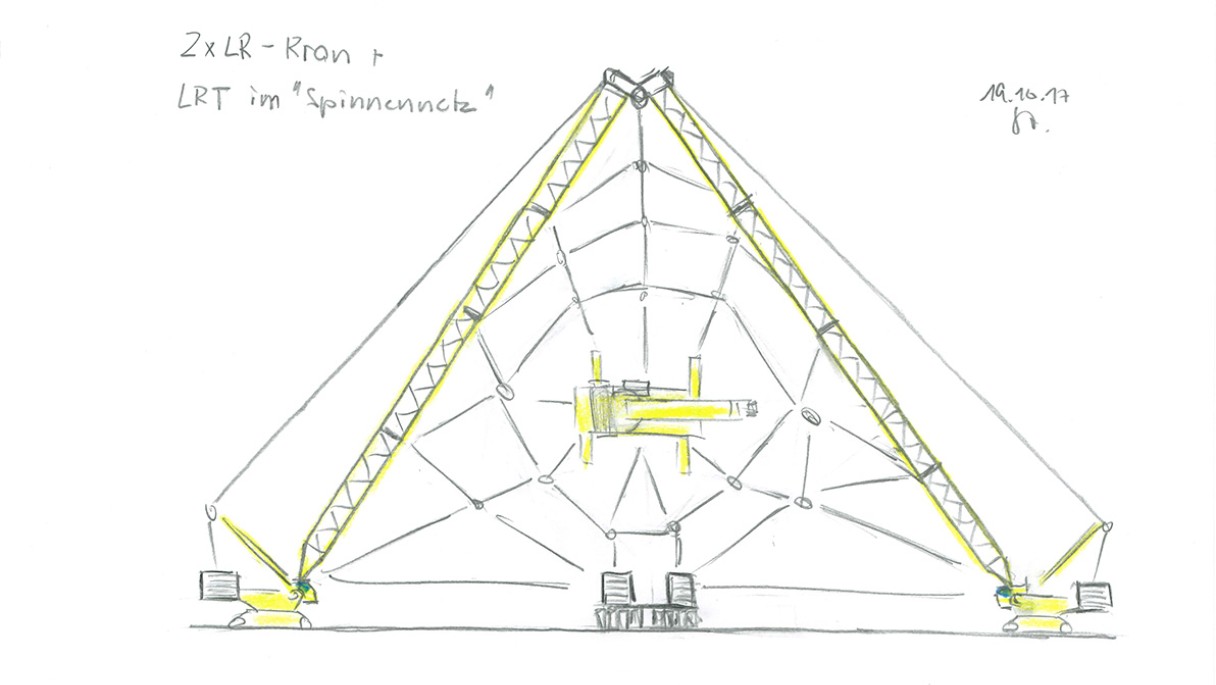
Nothing is finished until it has been tested
At the customer days, there were around 3000 pairs of eyes directed at the installation – not including the local residents and commuters who were able to see the spider from outside the plant. The first test was conducted just two weeks before the customer days. A team comprising a total of ten people from the crane acceptance section undertook this special project. “We wanted to maintain the tension – and if we had tested it much earlier, there would have been photographs of our installation on the net and on social media”, is how Josef Ried explains why the test was conducted so late. “One of the challenges for the test was that work had to be carried out synchronously on both crawler cranes.”
The test proved successful. Things only became difficult when a sudden gust of wind caused the non-load-bearing ropes to become badly tangled. It took several people several hours at a height of around 50 metres to untangle them. After this, the planning team had one last thing to do – illuminate the spider. “That gave me a real headache”, remembers Josef Ried. “In retrospect, however, fitting the lights was a very good idea. It looked great!” During the development work, too, the slogan for the customer days came to the fore. Lots of those concerned work together to make the Liebherr spider the trademark for the customer days 2018.
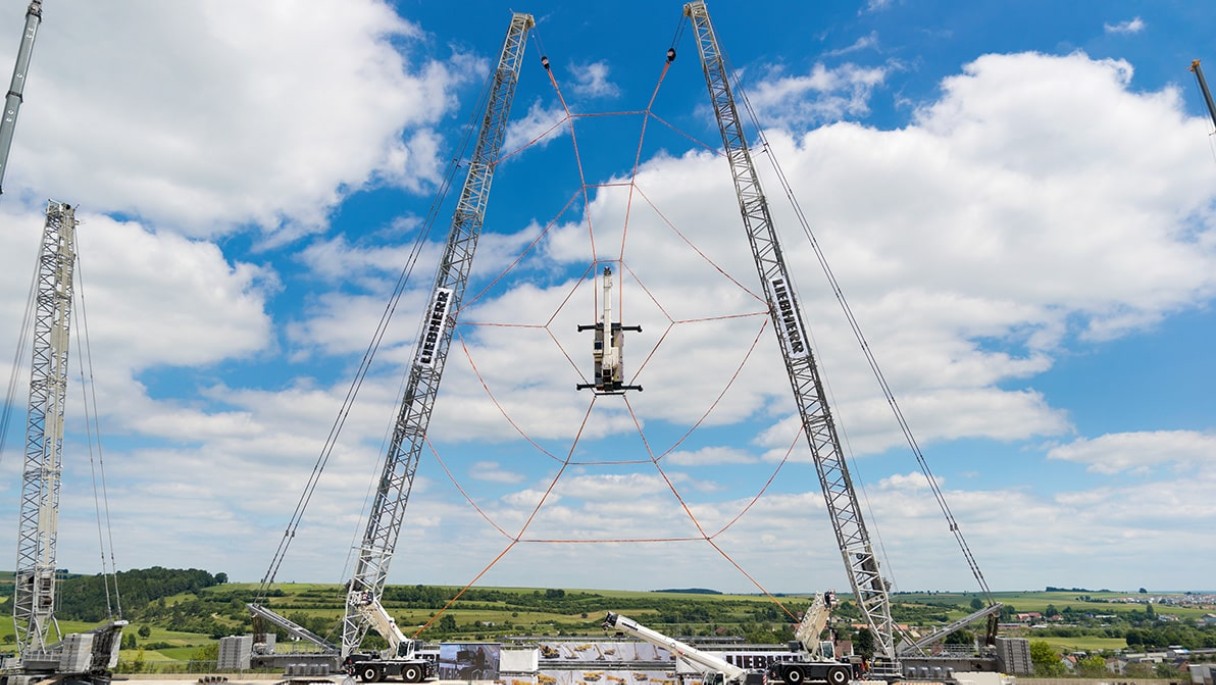
This article was published in the UpLoad magazine 02 | 2018.

